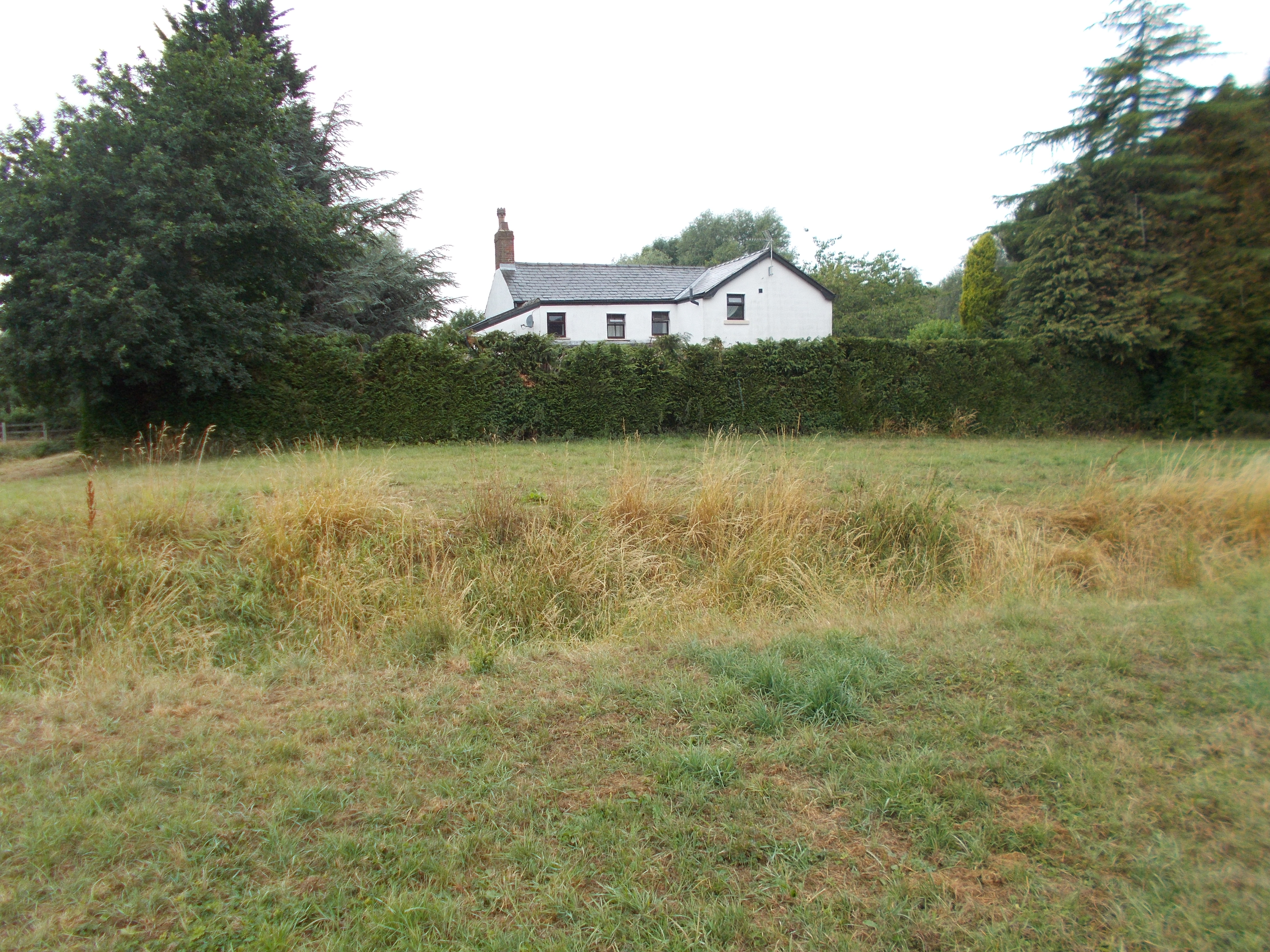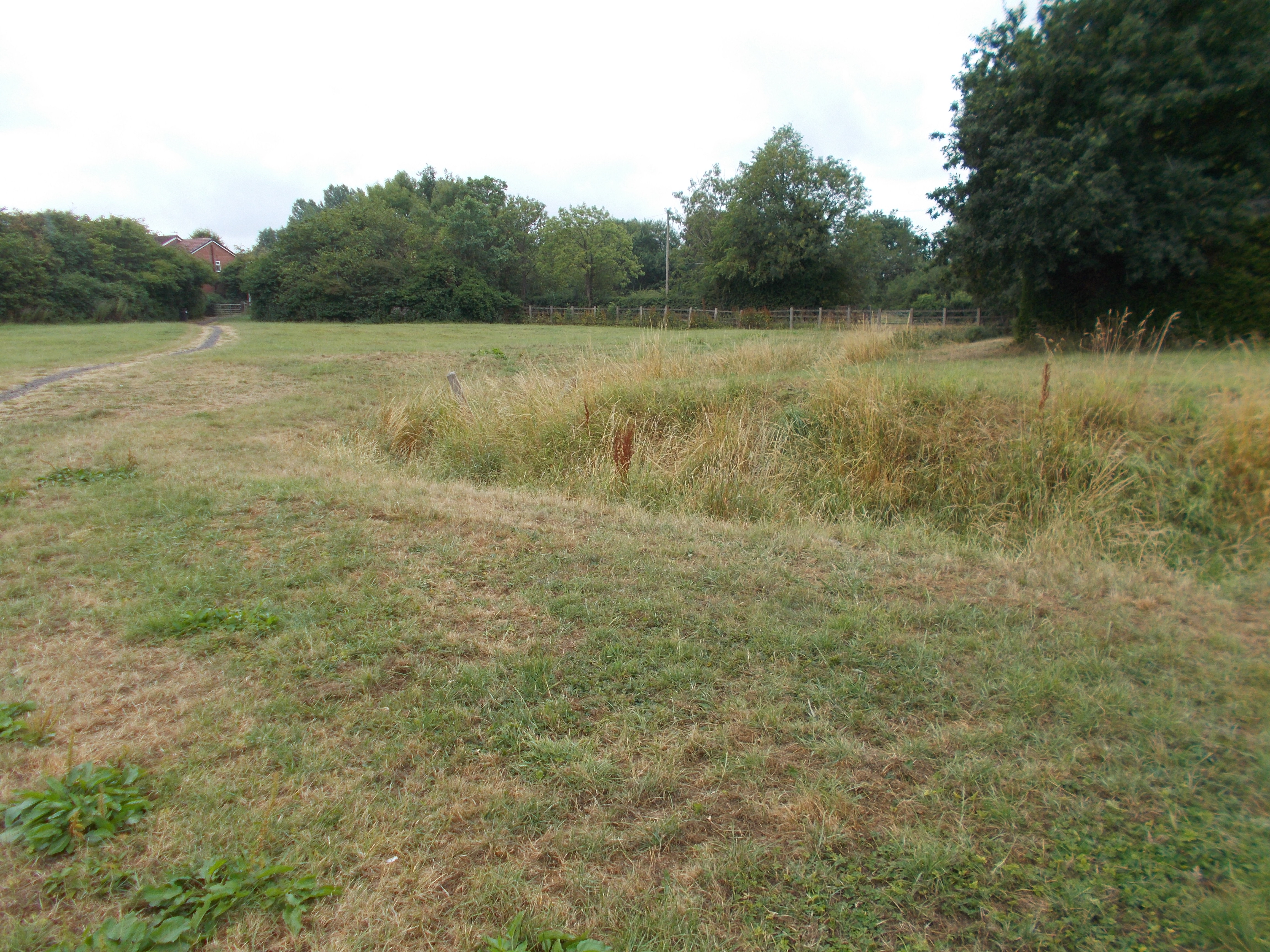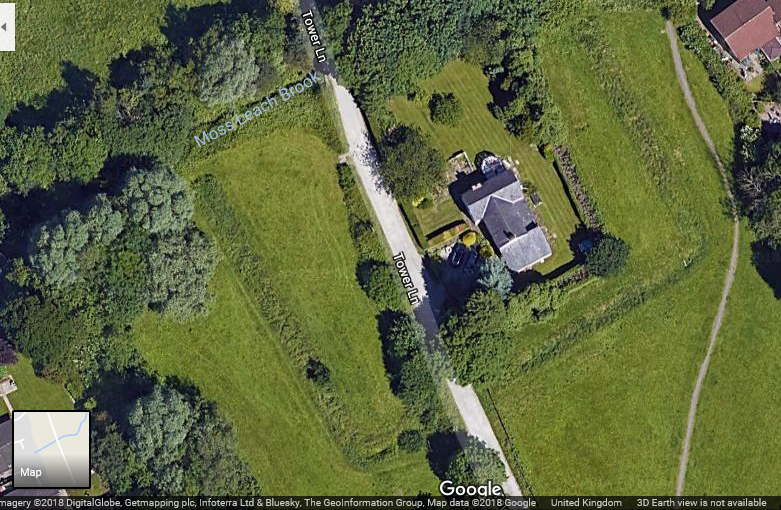Broughton Tower itself no longer stands, but surprisingly much of its moat remains at the site of this once fortified place. We’ll say a little more about how to see it (and it is quite extensive), but first a little history…

The tower was built as part of a fortified manor house by the Singleton family. No pictures or plans of it remain, but it was probably a Pele tower. Two of the best known examples of these in Lancashire are the huge ruin of Radcliffe Tower and the very well preserved Turton Tower. It was described as a ‘strong, heavy structure of stone, capable of being fortified with its surrounding moat’. Such buildings afforded protection from local feuds and from Scottish invaders.
Armed disputes with neighbours were not uncommon in Lancashire in the Medieval and Tudor periods. Theobald Walter seized Broughton manor from Richard Singleton and it was only restored to his grandson William Singleton decades later after three separate inquisitions ruled that it had been illegally and forcibly taken.
We don’t know the exact date the tower was built, but it’s thought that by the time Gilbert de Singelton held the manor, he had built some kind of structure on the site by 1325. The first definite recording of the moat is in 1516, which means the tower must have come into existence sometime between these two dates. To have such a high status building indicates the wealth of the Singleton family. In 1501, at the time of Robert Singleton’s death he was holding lands in Broughton, Sharoe, Durton and Fernyhalgh.

In 1515, the tower was lived in by Arthur Standish, who was renting it from the Singletons. It seems that he decided that he had a claim on the property and had sent his men to destroy hedges on the Singleton family’s land. John Singleton of nearby Chingle Hall led a group of armed men to the tower and took it by force. They broke into surrounding buildings and removed corn and cattle from them. Then they set about setting up defences: trees were felled to form protective barriers and in the chapel they placed “gownnys, crossbowys and other artillery of wer ” (guns, crossbows and other artillery of war). When the sheriff came to the scene to declare the occupation illegal they “caused a bagpipe to play and in great deryson daunced“. Both sides were bound over to keep the peace and the dispute was not resolved until the following year.
The Langton family take possession
As a Catholic family the Singletons had to pay fines for recusancy, that is the refusal to worship at a Protestant Church. The constant charges may have led the Singletons to finally have to sell the property in 1615 to the Langton family. The Langton family would remain there for over a hundred years.
The Langtons and Singletons had been allied together against the Hoghton family of Hoghton Tower just a few years before the hand over of the property. Thomas Langton had the widow Thomazine Singleton under his protection and she complained to him that the Hoghton family had stolen her cattle and impounded them at one of their properties, Lea Hall. Thomas Langton took 80 men to recapture the cattle, but the Hoghtons were armed and waiting. In the ensuing battle Thomas Hoghton was killed. Langton was arrested as he lay recuperating from his wounds in his bed at Broughton Tower and taken to Lancaster Castle. Rather than face trial, he settled out of court by giving Walton manor (at Walton le Dale) to the Hoghton family in payment for the death.

In 1632, Edward Bamber, an Englishman who had trained as a priest in Spain, returned to England under the assumed name of Reading. He was acting as chaplain at Standish Hall and was also giving mass clandestinely elsewhere in the area. Saying of mass was outlawed at the time and he was arrested and sent for trial at Lancaster Castle. On the way his captors lodged at Church Inn or as we now know it Church Cottage in Broughton. He was locked upstairs, wearing just his night shirt, while his captors got drunk below. He made his escape and was found wandering by one of the Singleton family and taken to safety at Broughton Tower. However, Edward Bamber was recaptured and imprisoned in Lancaster Castle for three years. He was executed there with two other Catholic priests, Thomas Whitaker and John Woodcock. In 1987 they were all beatified as martyrs by Pope John Paul II.
Battle of Preston
In the last battle of the Civil War, the 1648 Battle of Preston, Broughton Tower became part of the action. Just 350 metres north east of the site is a mound that acted as a dam for the moat system. It is now called Cromwell’s Mound and is thought to have been used as a convenient earthwork for artillery and as a viewing platform to survey the upcoming battle field. Tradition has it that Broughton Tower was stormed by Cromwell’s New Model Army and the Historic England website notes that many musket balls have been found between the tower and the mound.

In 1732, William Langton bequeathed Broughton Tower to his sister Jane. At the age of 70 she married into the Rawstorne family of Penwortham, bringing the property to their family for the next seventy years. In 1800, the tower was demolished and ten years later the land was split between James Rothwell of Hoole and the trustees of Kirkham Grammar School.
Today, Broughton Cottage (a rather large one) sits on the site of the tower and 100 yards to the north of it is Broughton Tower Farmhouse. In the early 1900s, there were reports that the farmhouse garden had carved stones from the tower, bearing the Langton Arms shield (a pattern of three distinctive chevrons which can still be seen on display at Broughton Parish Church).
In the 1930s, some of the moat was filled in when water works were carried out. A Mr. Rogerson of Broughton Tower Farm reported seeing large foundation stones and oak posts during the excavation work. As late as 1977, the farmer was still paying £20 in tithes to Broughton Parish Church.

When visiting the site today, you will see that the moat extends either side of Tower Lane. Although the moat does not have water in it, it is still sizeable and must still get wet at certain times of year as it features plants that grow in damp conditions. The nearby brook that once fed the moat still flows nearby. You can walk freely around the moat on both sides of the lane, it is all open access. Facing north, on the left hand side there is a sign stating that this was the site of the tower and if you head left into the field you can see the moat very clearly and walk around its course back out to Tower Lane. To get in to the right hand field there is an opening further back down Tower Lane to the south. On this side you can see the moat and where it meets up with the brook. The brook used to be called Sharoe Brook in this area, but maps now refer to it as Moss Leach Brook. There are footpaths all around the site which you can wander on, and despite a modern housing estate to the north many of the old oak trees have been preserved.
Site visited by A. and S. Bowden 2018
Access
Park either at the top or bottom of Tower Lane, but don’t park on it. Much of the lane is unadopted, and although it can be driven along in part we would not advise this as there are no passing places. Either park to the north of it on the modern housing estate, or south of it on the 1970s housing estate. The site of the tower is marked on the A-Z map as ‘Broughton Twr’, grid reference 541 336.
Nearby, just a short drive away
Broughton St John’s Parish Church
Thompson Dagnall’s War Sculptures
Preston to Garstang Turnpike Mileposts
References
A History of St John Baptist Church Broughton, Brendan Hurley (2012) Fast Print Publishing. Available from Broughton Church
A History of Broughton-in-Amounderness Church of England Primary School 1527-2007, Brendan Hurley (2008) . This book is available from Church Cottage Museum
Transactions of Lancashire and Cheshire Antiquarian Society Volume XIX 1901 The Old Castles of Lancashire P.75. Accessed via the Internet Archive https://archive.org/stream/transactionslan16socigoog#page/n10
British History Online: Townships:Broughton https://www.british-history.ac.uk/vch/lancs/vol7/pp117-124
Excerpt from Northwards by Anthony Hewitson book from lancshalls.co.uk via way Internet Archive Wayback Machine : http://web.archive.org/web/20040506081909/http://www.lancshalls.co.uk/Preston/broughtontower.htm
http://www.bebcmat.co.uk/bebcmat/the-history-of-edward-bamber
https://en.wikipedia.org/wiki/Edward_Bamber
https://historicengland.org.uk/listing/the-list/list-entry/1016551
Comments are closed.